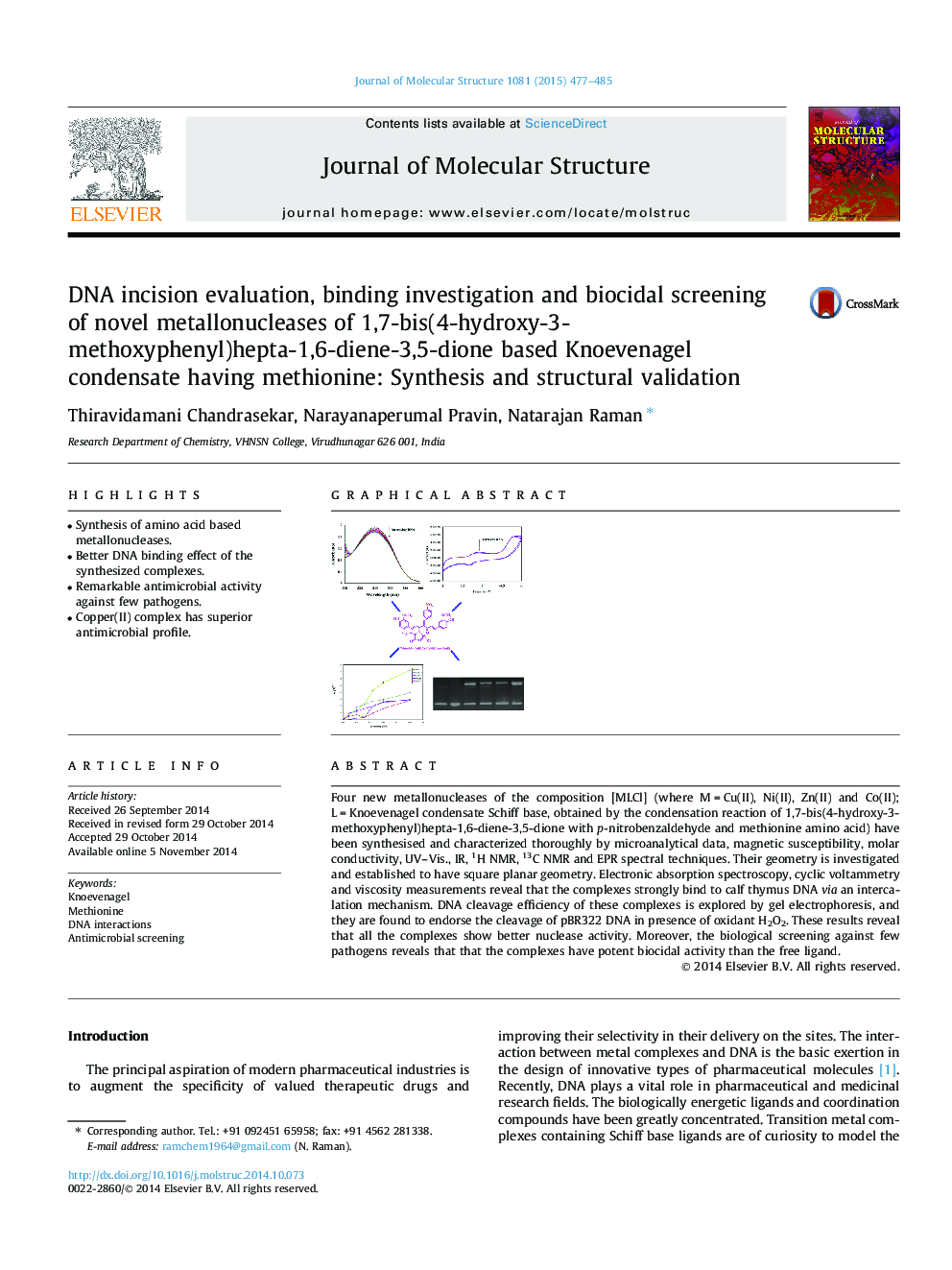| Article ID | Journal | Published Year | Pages | File Type |
|---|---|---|---|---|
| 1408363 | Journal of Molecular Structure | 2015 | 9 Pages |
•Synthesis of amino acid based metallonucleases.•Better DNA binding effect of the synthesized complexes.•Remarkable antimicrobial activity against few pathogens.•Copper(II) complex has superior antimicrobial profile.
Four new metallonucleases of the composition [MLCl] (where M = Cu(II), Ni(II), Zn(II) and Co(II); L = Knoevenagel condensate Schiff base, obtained by the condensation reaction of 1,7-bis(4-hydroxy-3-methoxyphenyl)hepta-1,6-diene-3,5-dione with p-nitrobenzaldehyde and methionine amino acid) have been synthesised and characterized thoroughly by microanalytical data, magnetic susceptibility, molar conductivity, UV–Vis., IR, 1H NMR, 13C NMR and EPR spectral techniques. Their geometry is investigated and established to have square planar geometry. Electronic absorption spectroscopy, cyclic voltammetry and viscosity measurements reveal that the complexes strongly bind to calf thymus DNA via an intercalation mechanism. DNA cleavage efficiency of these complexes is explored by gel electrophoresis, and they are found to endorse the cleavage of pBR322 DNA in presence of oxidant H2O2. These results reveal that all the complexes show better nuclease activity. Moreover, the biological screening against few pathogens reveals that that the complexes have potent biocidal activity than the free ligand.
Graphical abstractFigure optionsDownload full-size imageDownload as PowerPoint slide
